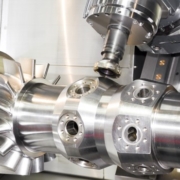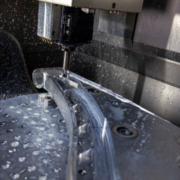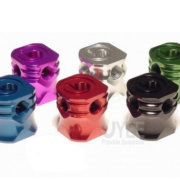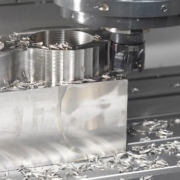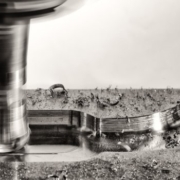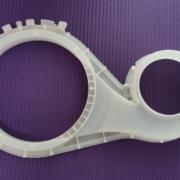The Importance of Engineering Tolerances You Should Know
CNC machines are capable of extreme precision. Some machines can achieve an accuracy of +/- 0.0025 mm. Milling an item with the greatest precision on a CNC machine is costly and time-consuming. Here, machining tolerances come into play. Since various components need varying degrees of precision, it is cost-effective for a designer to define the precise tolerance required for each component.
What Are Tolerances?
In brief, tolerance measures indicate the amount of accuracy required to create an item. Specifically, machining tolerances describe the amount of permissible variation in the final dimensions or measured value of a component.
Typically, machinists measure machining tolerances using numeric values prefixed by the sign. For instance, you may apply a length tolerance of 0.001″ to a component measuring 2.550 inches. Specified machining tolerances inform manufacturers and CNC machining services of the level of accuracy required to produce a component. The more the accuracy needed in manufacturing tolerance, the smaller the tolerance. The greater the tolerance, also known as looser, the less accuracy is required.
Considerations When Selecting Tolerances
A critical consideration in selecting the right CNC machining tolerances is determining when a change in size or dimension will harm an item’s functionality and performance. Certain components, such as vital engine components, need high accuracy, and any deviation in geometric shape might have severe effects. Other kinds of components may not need the same level of accuracy, and a little bigger manufacturing variance will not affect them.
When do you need tight tolerances?
While it may not be essential that the whole construction of a component comply with the tightest tolerances, some elements of that component may need them. At structural places where a component must fit or connect to other components, such as holes, the greatest level of accuracy is often necessary. If a component must be compatible with one or more other components, it must have tight tolerances. In other words, tolerances indicate how your product should perform to your CNC machined parts provider. In such circumstances, you must explain the appropriate tolerances to the CNC machining services; otherwise, they will be unaware of the intended design.
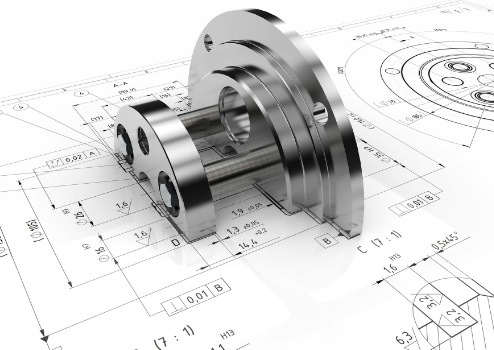
Notably, the most precise machining tolerances might be more expensive due to the wear induced by CNC machine equipment. While a new tool may have no difficulty reaching 0.001″ tolerances, if the same tool is used to create numerous iterations of the same product, this accuracy may become less consistent.
-
High Costs for Tight Requirements
Tolerances have a direct impact on the quality and price of a component. High tolerance machining is often more costly since the components must be machined more slowly and frequently using more expensive equipment. Since the margin for error is substantially lower — we’re talking fractions of a millimeter — parts with tighter tolerances need a more thorough CNC quality check. High precision machining may increase production and quality inspection expenses.
-
Tolerances Depending on the Material
When determining machining tolerances, you must consider the selection of materials. Different materials have unique properties that may impact the tolerance level. Among these qualities are the following:
- Hardness: softer materials are more challenging to manufacture to tight tolerances. This is mostly owing to their tendency to undergo dimension changes when the cutting tool contacts them. Therefore, greater patience is required while machining these softer materials.
- Abrasion: Rough and coarse materials are often difficult on cutting instruments and may further accelerate their wear. Because alterations to the cutting tool reduce precision, it isn’t easy to attain precise tolerances with these materials. In most cases, machining abrasive materials necessitate that the technician switches out the cutting tool many times.
- Heat stability mostly impacts non-metallic materials. As heat accumulates throughout the machining process, these materials begin to deform. These limitations are the procedures that may be performed on the material.
-
Selection of Production Methods
Each CNC machine has a different capability. Some machines are capable of achieving tolerances that others can only imagine. The CNC machine’s tolerance dictates the kind of items it can process. In certain instances, different procedures must be performed on the component before it may attain the required fine tolerance.
-
Examination
It will take considerable time to check items with very tight tolerances. Additionally, you may need to use specific techniques and equipment to test the tolerance of components.
How to Find the Right Tolerance
Sometimes choosing tolerance is easy. It knows whether you choose well. Product or component designers must determine a specific part’s tolerances. It affects project tolerance, turnaround time, and cost. A consumer engaging with a CNC manufacturing service may unintentionally pay twice for the “best quality achievable.” CNC machining is a high-precision technique; therefore, wider tolerances are still near to original specs. Here are some decision-making tips:
-
Evaluate your role
Not all components require tight tolerances. The part’s usage determines its machining precision. Creating non-interlocking pieces demands less milling precision. If you don’t require tight tolerances, don’t bother.
-
Find a reputable CNC company
Trusted CNC machining services can help consumers discover the proper tolerance. Before submitting a production request to a CNC machining service or rapid prototyping business, engineers or component designers define tolerances. Then, they may discuss their aims and specs with a production professional to choose the optimal tolerances for their project. This information may save time and money for CNC machining.
If you don’t specify tolerances when submitting an item for manufacturing, most CNC machining services will use their standard tolerance, generally 0.005 inches (0.127 mm). This undetectable difference might affect how your finished product fits into an assembly. If a component’s hole is too tiny by 0.005 inches, fitting its adjacent part might be difficult.
Conclusion
Now you understand the most important factors to consider when selecting tolerances for your next CNC machining job. We are the production partner that can satisfy your requirements regardless of the intricacy of your design. Our platform gives instantaneous pricing and free DFM feedback, and our CNC machining services can provide components in as little as two days with tolerances as tight as +/- 0.0002 in. Follow these procedures and conduct your research before tolerance, and you will end up with a design that is easy and inexpensive to construct.

